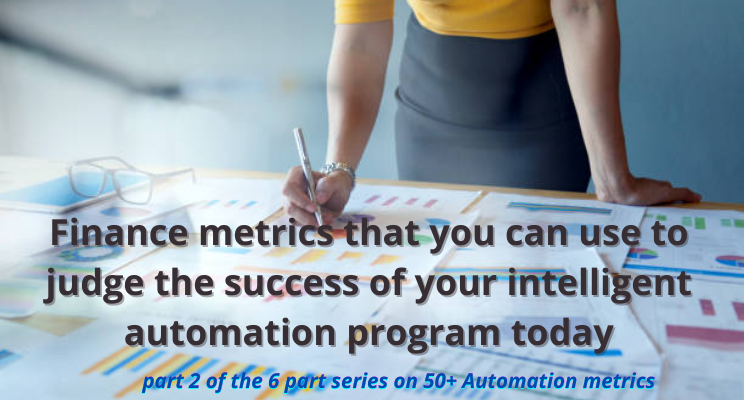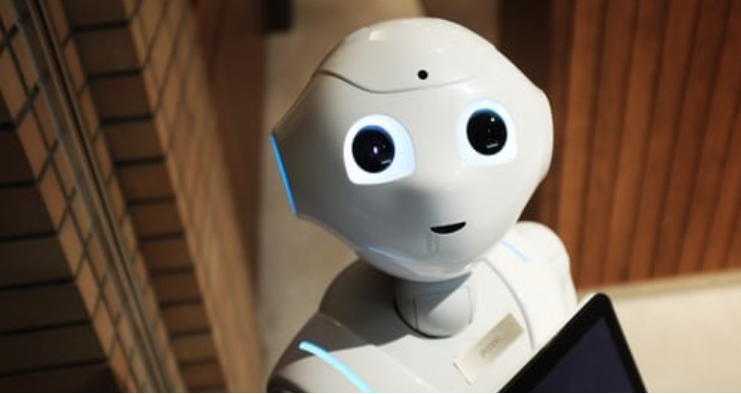K is for: KPIs | Knowledge Transfer | Knowledge Sharing | KISS | Keystrokes | Kryon | Kapwing | Kissing Frogs and Kimonos
Welcome to the ELEVENTH part of a 26 part series charting the A – Z of Robotic Process Automation, Intelligent Automation and Digital Transformation (DT). Today’s letter is the letter ‘K’.
KPI: The value of any metric relies on its ability to influence business decision making. The digitization of front, back and middle-office business processes, enabled by Robotic Process Automation (RPA), Intelligent Automation (IA), Data Analytics (DA) and Artificial Intelligence (AI), represents a fantastic opportunity for enterprises to: reduce costs, improve productivity, drive income and increase quality.
“Don’t just think about KPIs just related to savings, like saved hours, or reduced costs. How can automation be used to increase revenue in your business? Consider and measure increased throughput, improved quality and a better customer experience.”
Arif Khan, Customer Success Manager
Digital key performance indicators (D-KPIs) are needed to track transformation progress. According to Gartner, the best digital metrics:
- Have a clearly defined and defensible causal relationship to a business outcome
- Work as a leading, not lagging, indicator
- Address a specific, defined audience
- Can be understood by a non-IT audience
- Drive action when they change from green to yellow to red.
There are many digital KPIs to choose from, but whatever digital business metrics are decided upon they must pique the interest executive decision makers.
- Digital KPIs for the Automotive Industry of the Future (Forbes)
- The 7 Most Important Digital KPIs to Track (Linkedin: Rameshwar Thakur
Dont simple copy someone else’s metrics. KPIs need to be industry-specific, and then organization-specific, to be meaningful and useful.
“You simply can’t measure something you don’t have a measuring stick for! If organisations are to succeed then they need to have a clear understanding of their digital ambition and that is what they should be measuring progress against.”
Kieran Gilmurray, Global Automation Lead
Kiss RPA (Keep it simple stupid). At its core, Robotic Process Automation (RPA) is a simple tool (i.e. scripting and playing back keystrokes). RPA is arguably most successful when applied to simple, repeatable processes. Whilst it is tempting to evidence how talented you are as an RPA developer by creating complex code; this is a waste of effort and time. As a general rule of thumb, the more complex the code or process the more difficult and costly it is to build and maintain. Build and maintenance costs should be minimised and code reuse maximised to obtain the most value from an RPA program.
“KISS doesn’t mean one tool in the box (or a solution looking for problems). We are beginning to see technologies being forced into the equation that are far from plug and play, far from simple to deploy and therefore far from effective. We are even decommissioning some of these failed experiments converting the projects back to RPA + ML for example.”
Nick Andrews, Founder Virtual Operations
Kapwing: Digital software need not be expensive. Indeed it need not cost anything at all. Oraganisations have a plethora of free, intuitive, online services available to tell their stories. Kapwing is an online image, video, and GIF editing platform. There are free and paid for versions of this software.
Knowledge Transfer: If an organisation has never undergone a digital transformation then it is recommended that they engage an expert consultancy. An expert consultancy should be engaged to support transform the business operations and intellectual capital of the business too. Rather than simply allow expert consultancies or system integrators (SIs) to ‘land and endlessly expand’, firms should insist on a transfer of intellectual knowledge to their business teams. This not only helps keep projects affordable but the knowledge from one implementation program can be used to grow the business time and time again.
But do make sure that there is a program in place to share new knowledge. Some of the very best AI | RPA | IA | DA practitioners can be some of the worst team members. Skilled practitioners with multiple years’ experience are few and far between. Therefore, their openness and willingness to both document and share their knowledge with colleagues is key in growing a team’s (and an organisations) collective capability.
“The most important output of any great AI | RPA | IA | DA practitioner is more great practitioners. Always be learning, always be teaching.”
Paul Arnold, Head of Product and Development at Cortex Intelligent Automation
Time and time again it has been show that organisations digitally transform best when everyone in the organisation has digital skills.
“Neither Microsoft Windows nor Microsoft Office became a big deal until they were on everybody’s desk. If Robotic Process Automation, Intelligent Automation, Data Analytics and Artificial Intelligence are to become mainstream, these tools need to be democratized. For them to be truly transformative, they have to be on everybody’s desk and the knowledge shared amongst the entire workforce.”
Pavani Koudri, RPA & AI Architect
Keystrokes: Robotic Process Automation (RPA), involves automating repetitive and tedious processes within organizations. RPA is relatively cheap, easy to deploy and can quickly produce business results by boosting productivity, increasing speed, improving regulatory compliance and data accuracy. Robotic Process Automation does this by replicating human keystrokes. It does it 24 hours a day, seven days a week at speed freeing people from mundane, repetitive tasks.
“RPA does not automate people’s jobs – it automates routine work.”
Pavani Koudri, RPA & AI Architect
Kissing Frogs and Kimono’s. Not every tool is the same. Organisations need to find the platform that best suits their current and future needs. Dont select a platform and then go look for business problems.
“We last counted 100+ Automation tools and technologies, very few of which were compatible with each other. Once you understand what your business problem is, you can then look at the role Automation tools and Process re-engineering may play in solving them. Depending on the nature of your problem you may have to kiss a number of technology frogs before you select the combination of tools that is right for you (i.e., what you have in your Automation Kitbag) The technology providers all profess plug and play and their claims for functionality and efficacy can mind-boggling, you have to get them to open the Kimono….”
Nick Andrews, Founder Virtual Operations
Kryon: Is a an RPA platform which offers attended, unattended and hybrid automation. Kryon’s robotic process automation business tools and platform combines advanced IMR and OCR capabilities to record and execute processes.
Kryon’s Process Discovery™technology works by installing a ‘discovery robot’ or ‘discovery bot’ on different users’ desktops. The ‘discovery bots’ analyze the visual aspects of a process as displayed on users computer screens using patented image recognition algorithms, mouse clicks, and API interactions. Within a short period of time the ‘discovery bots’ are able to define a process and all key variations in how it is performed. Whilst an organisation may have to tinker with, and refine, the resulting process, Kryon argue that it is much faster to use its outputs than manually code a process flow from scratch.
Note: This is not a recommendation for Kryon but it does begin with the letter ‘K’. It is for your organisation to document its business goals and the capabilities of the software platform it requires to meet those goals.
This article highlighted things relating to intelligent automation and digital transformation beginning with the letter “K”. There are many ‘K‘s’ organisations need to consider but what ‘K‘ do you think is the most important?
If you like this article then you may find these articles of use too.
- How to build a business case for Intelligent Automation and Robotic Process Automation
- 30 ways to build a pipeline of processes suitable for Robotic Process Automation (RPA) and Intelligent Automation (IA)
- I’ve met 100+ RPA developers but these are the 15 signs of an ‘exceptional’ RPA developer!
- 8 questions to ask to ensure you select the ‘right’ processes to automate using RPA | IA.
- 14 rules for Robotic Process Automation (RPA) and Intelligent Automation (AI) success
- The A-Z of Robotic Process Automation, Intelligent Automation and Digital Transformation
If this could benefit someone else tag them and share this.
Free to reuse: We are a community of RPA and Intelligent Automation experts with years of real world experience. We have stories to tell and the scars to show for it. We share our collective wisdom for free to simply provide as much value as we can to you. Therefore, if you want to post this article on your LinkedIn page then please feel free to do so. The more information we share within the RPA community the more likely businesses are to succeed with this excellent technology.
Further Help: If I can help you in any way please do reach out.
Note: The views expressed above are our views and not those of my employer or the employers of the contributing experts.








Leave a Reply